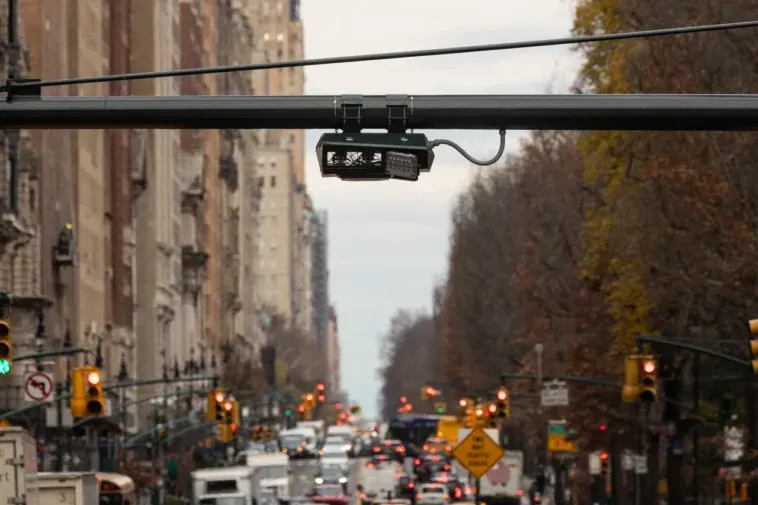(Wired) At 8:22 am on December 4 last year, a car traveling down a small residential road in Alabama used its license-plate-reading cameras to take photos of vehicles it passed. One image, which does not contain a vehicle or a license plate, shows a bright red “Trump” campaign sign placed in front of someone’s garage. In the background is a banner referencing Israel, a holly wreath, and a festive inflatable snowman.
Another image taken on a different day by a different vehicle shows a “Steelworkers for Harris-Walz” sign stuck in the lawn in front of someone’s home. A construction worker, with his face unblurred, is pictured near another Harris sign. Other photos show Trump and Biden (including “Fuck Biden”) bumper stickers on the back of trucks and cars across America. One photo, taken in November 2023, shows a partially torn bumper sticker supporting the Obama-Biden lineup.
These images were generated by AI-powered cameras mounted on cars and trucks, initially designed to capture license plates, but which are now photographing political lawn signs outside private homes, individuals wearing T-shirts with text, and vehicles displaying pro-abortion bumper stickers—all while recording the precise locations of these observations. Newly obtained data reviewed by WIRED shows how a tool originally intended for traffic enforcement has evolved into a system capable of monitoring speech protected by the US Constitution.
The detailed photographs all surfaced in search results produced by the systems of DRN Data, a license-plate-recognition (LPR) company owned by Motorola Solutions. The LPR system can be used by private investigators, repossession agents, and insurance companies; a related Motorola business, called Vigilant, gives cops access to the same LPR data.
However, files shared with WIRED by artist Julia Weist, who is documenting restricted datasets as part of her work, show how those with access to the LPR system can search for common phrases or names, such as those of politicians, and be served with photographs where the search term is present, even if it is not displayed on license plates.
A search result for the license plates from Delaware vehicles with the text “Trump” returned more than 150 images showing people’s homes and bumper stickers. Each search result includes the date, time, and exact location of where a photograph was taken.
“I searched for the word ‘believe,’ and that is all lawn signs. There’s things just painted on planters on the side of the road, and then someone wearing a sweatshirt that says ‘Believe.’” Weist says. “I did a search for the word ‘lost,’ and it found the flyers that people put up for lost dogs and cats.”
Beyond highlighting the far-reaching nature of LPR technology, which has collected billions of images of license plates, the research also shows how people’s personal political views and their homes can be recorded into vast databases that can be queried.
“It really reveals the extent to which surveillance is happening on a mass scale in the quiet streets of America,” says Jay Stanley, a senior policy analyst at the American Civil Liberties Union. “That surveillance is not limited just to license plates, but also to a lot of other potentially very revealing information about people.”
DRN, in a statement issued to WIRED, said it complies with “all applicable laws and regulations.”
Billions of Photos
License-plate-recognition systems, broadly, work by first capturing an image of a vehicle; then they use optical character recognition (OCR) technology to identify and extract the text from the vehicle’s license plate within the captured image. Motorola-owned DRN sells multiple license-plate-recognition cameras: a fixed camera that can be placed near roads, identify a vehicle’s make and model, and capture images of vehicles traveling up to 150 mph; a “quick deploy” camera that can be attached to buildings and monitor vehicles at properties; and mobile cameras that can be placed on dashboards or be mounted to vehicles and capture images when they are driven around.






